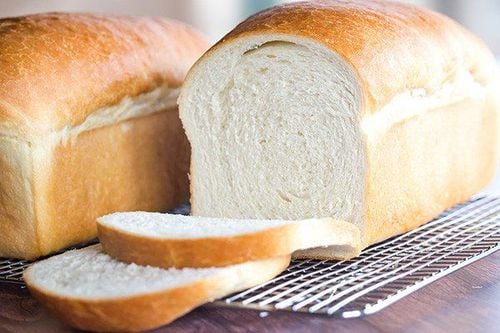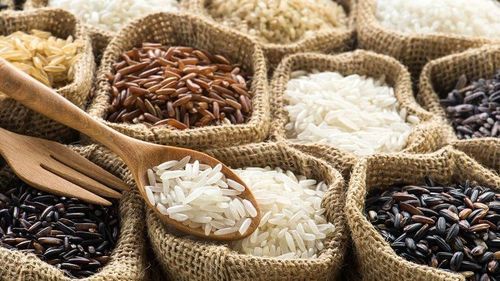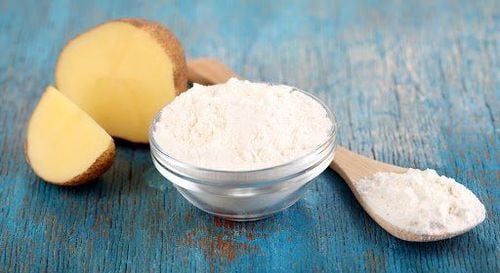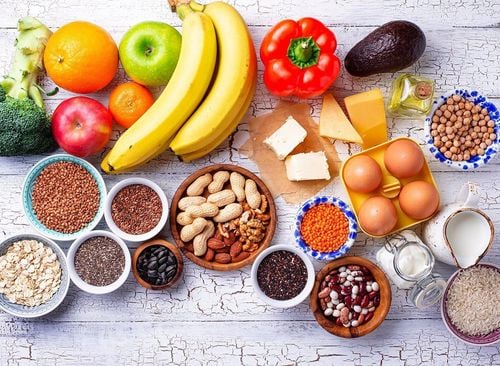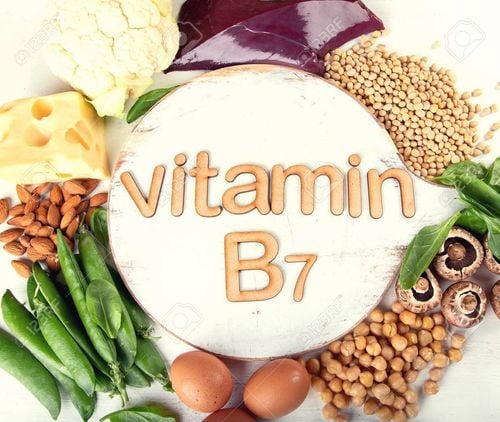This is an automatically translated article.
Rice is the staple food in many countries, feeding billions of people around the world. There are many varieties of rice that vary in color, flavor and nutritional value. Certain types of rice are rich in nutrients and plant compounds that have health benefits. Others have less nutritional content.
1. The Healthiest Types of Rice
The following types of rice have the most abundant nutritional content:1.1. Brown rice (also known as brown rice)
Brown rice is whole grain rice, with the outer husk removed. Unlike white rice, brown rice still contains the bran and germ layers - which are high in nutrients. Brown rice bran contains the flavonoid antioxidants apigenin, luteolin and quercetin - substances that play an important role in disease prevention. Regular consumption of foods with high levels of flavonoids will reduce the risk of chronic diseases such as cardiovascular disease, cancer,...
Brown rice also provides the same calories and carbs as white rice (the type of rice that has been remove bran and germ). However, brown rice has three times the amount of fiber and has a higher protein content than white rice. Both fiber and protein create a feeling of fullness. So, the answer to the question of whether eating brown rice will help you lose weight is: Yes.
Moreover, eating brown rice instead of white rice helps regulate blood sugar and insulin levels. Besides, brown rice contains an abundant amount of magnesium (which plays an important role in the metabolism of blood sugar and insulin). Therefore, brown rice is a better choice for diabetics.
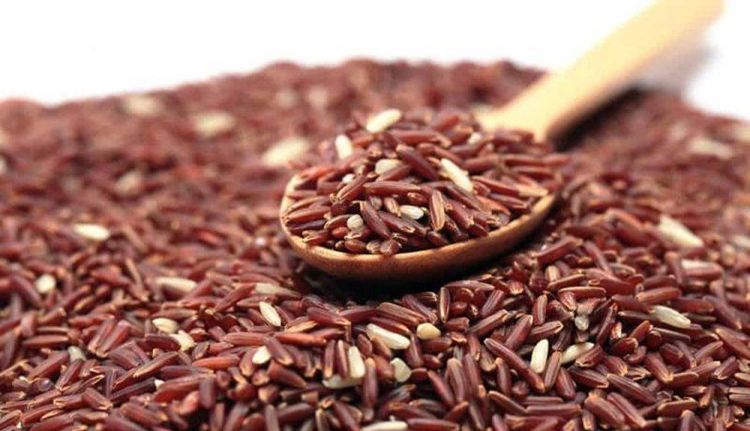
Gạo lứt có lượng chất xơ cao gấp 3 lần và có hàm lượng protein cao hơn gạo trắng.
1.2. Black rice (forbidden rice)
Black rice varieties such as Thai Jasmine black rice and Indonesian black rice have a deep black color, often turning purple when cooked. This type of rice is also known as forbidden rice because the common people were not allowed to eat it, but only offered it to the royal family in ancient China.
Studies show that among rice varieties, black rice has the highest antioxidant activity. Antioxidants help protect cells from damage caused by free radicals, helping to prevent the progression of chronic diseases such as cardiovascular disease, cancer, stress,...
Black rice is rich in anthocyanins - a group of flavonoid plant pigments with powerful antioxidant and anti-inflammatory, and potent anti-cancer properties. Consuming foods rich in anthocyanins such as black rice reduces the risk of certain cancers, including colorectal cancer. At the same time, in some studies, anthocyanins extracted from black rice can prevent the growth and spread of breast cancer cells.
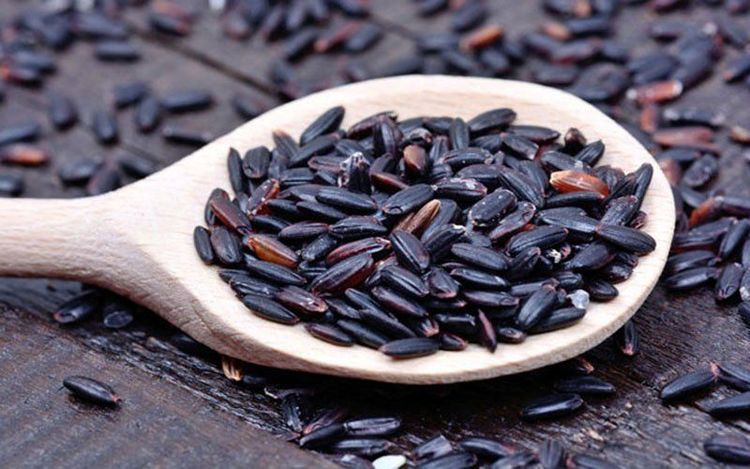
Các nghiên cứu cho thấy trong số các loại gạo, gạo đen có hoạt tính chống oxy hóa cao nhất.
1.3. Red rice
Red rice varieties such as Himalayan red rice and Thai red rice are deeply pigmented, packed with nutrients and plant compounds that have health benefits. This type of rice has a higher protein and fiber content than white rice. In particular, it is rich in flavonoid antioxidants, which are apigenin anthocyanins, myricetin and quercetin.
In fact, red rice fights free radicals better than brown rice because it contains a higher concentration of flavonoid antioxidants. Flavonoids help reduce inflammation, control free radicals in the body, and reduce the risk of chronic diseases such as cardiovascular disease or type 2 diabetes.
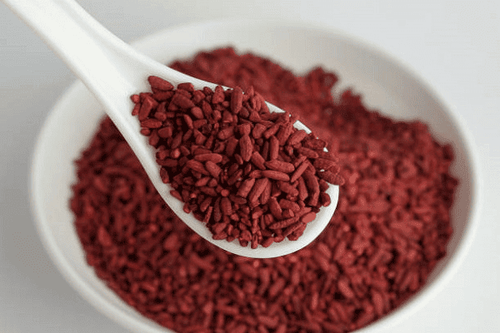
Gạo đỏ có hàm lượng protein và chất xơ cao hơn gạo trắng.
1.4. Wild rice
Wild rice (wild rice) is the grain of aquatic grasses but it is also commonly used as rice. It is a whole grain, contains more fiber and has 3 times higher protein content than white rice, so it helps to keep you fuller for longer. In addition, wild rice has many health benefits (in animal studies).
Animal studies show that replacing white rice with wild rice reduces the risk of cardiovascular disease. Wild rice is also rich in vitamins and minerals such as B vitamins, magnesium and manganese. Furthermore, research shows that the antioxidant activity of this rice is 30 times higher than that of white rice.
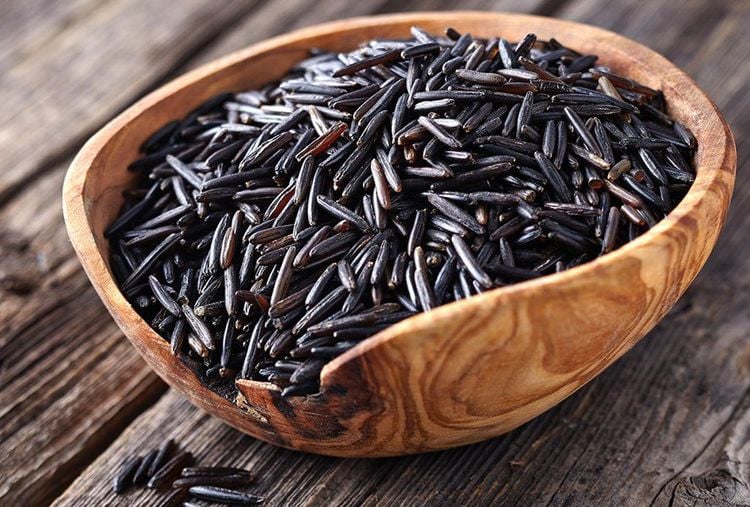
Các nghiên cứu trên động vật chỉ ra rằng việc thay thế gạo trắng bằng gạo hoang giúp giảm nguy cơ mắc bệnh tim mạch.
2. Rice varieties with less nutrients
The types of rice below are lower in nutrients than those mentioned above.
2.1. Rice
White rice is rice that has had the husk, bran and germ removed. This helps prolong the shelf life of rice, but many of the nutrients and healthful plant compounds are lost during processing. Therefore, it contains less fiber, protein, antioxidants, some vitamins and minerals, etc. than brown rice.
White rice has less fiber and protein than brown rice, so it makes users hungry faster and has a lot of impact on blood sugar. It also has a much lower antioxidant content than brown, black, red, and wild rice.
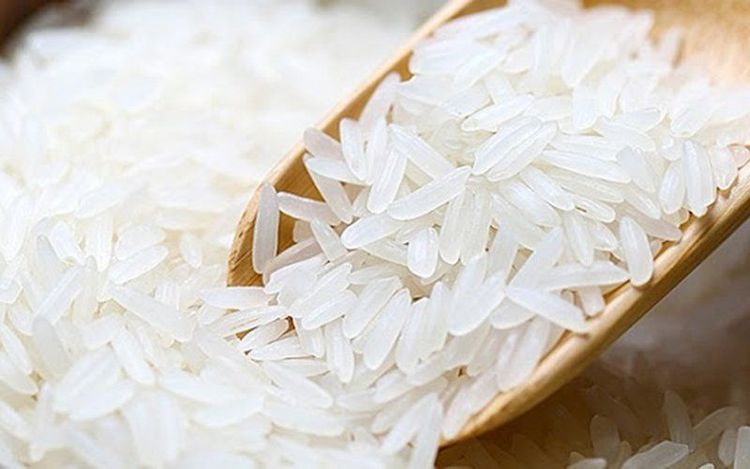
Gạo trắng ít chất xơ và protein hơn gạo lứt nên khiến người dùng nhanh đói và có nhiều tác động đến lượng đường trong máu.
2.2. Ready-to-eat, packaged rice mix
Some packaged rice mixes are high in calories, sodium, and unnecessary ingredients. Consuming too much sodium increases your risk of serious conditions like heart disease and stroke. In addition, processed rice products may contain added sugars, artificial colors, and preservatives. These are ingredients that need to be limited in order to have good health.
3. What kind of rice should I choose?
Research shows that using whole grains is healthier than refined grains. Whole grains are associated with a reduced risk of type 2 diabetes, cardiovascular disease, obesity, and certain types of cancer. So, whole grain rice like brown rice, red rice, black rice or wild rice is healthier than white rice. Besides, these types of rice are rich in antioxidants, help fight diseases, and are less prone to diseases such as metabolic syndrome, depression,...
Although white rice also has health benefits, it does not. are appreciated by red rice, black rice, brown rice. So people who are eating refined rice should try one of the healthy rice varieties mentioned above. At the same time, it is advisable to cook rice yourself instead of eating ready-made products from rice to reduce the amount of sodium and preservatives, sugar, ... in these products.
Whole grain rice such as brown rice, red rice, black rice, ... contain bran and germ, providing many nutrients such as protein, fiber, antioxidants, some vitamins and minerals. Therefore, it is advisable to choose whole grain rice instead of white rice to reduce the risk of type 2 diabetes, obesity and cardiovascular disease.
Please dial HOTLINE for more information or register for an appointment HERE. Download MyVinmec app to make appointments faster and to manage your bookings easily.
Reference source: healthline.com.




